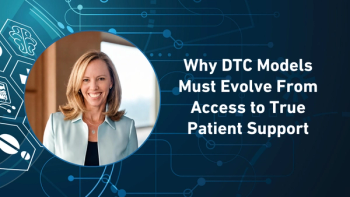
- Pharmaceutical Commerce - March/April 2012
Adding rigor to the adverse event reporting process
As FDA makes progress on an active surveillance system, drug manufacturers and third-party drug safety vendors navigate their own set of challenges
The widely accepted statistic is that only about 10% of all adverse events (AEs) are reported to FDA. In 2010, that 10% equaled about 750,000 reports, which was an almost 31% increase over 2009 and the biggest year-over-year increase (as a percentage) in the last decade. The estimates for 2011 aren't due for another couple of months (per FDA), but they're expected to continue the upward trend. Pharmacovigilance experts agree that one of the main drivers of recent growth in AE reporting rates is, quite simply, increased awareness of drug safety and adverse event reporting among pharma companies, as well as healthcare providers and consumers. But new developments in pharmacovigilance will likely drive those rates higher, while others will help pharma companies manage the increasing volume.
Besides the long-standing FDA requirement for post-marketing monitoring of the adverse events associated with a drug, and acknowledging the greater emphasis that FDA is putting on all aspects of drug safety these days, manufacturers have an additional reason to pay close
attention to AE reporting: A year ago, the Supreme Court ruled unanimously that even a number of AEs not "statistically significant" might need to be reported to stockholders of the company as a "material" financial event. The case, Matrixx Initiatives, Inc. vs. Siracusano (Case 09-1156) was brought by investors after a Matrixx product, an OTC cold remedy called Zicam, was found to have side effects that ultimately led to the product's recall.
Trends in outsourcing
As the volume of AERs increases, the number of resources needed to process and analyze them rises as well. Instead of handling pharmacovigilance activities in-house, many pharma companies outsource the process, either wholesale, as in the case of small manufacturers, or as partners (see Pharmaceutical Commerce, Jan/Feb 2011, p. 1). Some companies in the outsourced AER business are reporting double- and even triple-digit growth: Elizabeth Garrard, chief safety officer of Drug Safety Alliance (Research Triangle Park, NC) estimates her company has seen 100% growth over the past few years, while Steve Swantek, president and CEO of Prosar (St. Paul, MN), reports an average of 40% growth per year in the past two years. Meanwhile, Carole DeRoche of DDN Medical Affairs, a Dohmen company (Menomonee Falls, WI), calls her company's growth "remarkable."
The reasons are not surprising. For one, pharmacovigilance is not a core competency for some manufacturers. But mostly, it's a matter of economics. As the total volume of adverse events being reported increases, pharma companies can outsource these functions cost-effectively, without having to build (or add to) their own pharmacovigilance infrastructure. But even when outsourcing, pharmacovigilance requires a large investment. Last year Pharmaceutical Commerce reported on a 2010 study by Cutting Edge Research (Durham, NC) that found pharma companies spend an average of $686,000 per product on pharmacovigilance activities, both clinical and commercial (see Pharmaceutical Commerce, Jan/Feb 2011, p. 24).
Per FDA rules, there are four basic criteria that constitute a reportable AE: an identifiable patient; an identifiable reporter; a specific drug; and a symptom or effect. AEs are further categorized as "serious" and "nonserious," and "expected" or "unexpected." The AEs that get the most attention are serious and unexpected ones—these are generally not on the product label when the product is launched, but are often added after the AEs are analyzed. AE documentation specialists use medical training and knowledge of an AE reporting structure to categorize reports; sometimes these require followup with either the reporter (e.g., a physician) or even the patients themselves.
Elizabeth Garrard, Drug Safety Alliance
Garrard of Drug Safety Alliance says she's witnessed many companies that outsource these activities sacrifice quality for the sake of saving money. "They see drug safety as a commodity. There's a continuing march to the lowest-cost provider," she says, adding that usually means outsourcing overseas. Garrard cautions that there is an unrealized cost of about 20% associated with offshoring, having mostly to do with quality and oversight.
Prosar's Swantek says he has seen pharmacovigilance activities, particularly for pharma companies with large AE case volume, go to countries like India, but that now the trend is reversing. "I'm seeing the business come back the other way," he says. "There's more to it than just cost savings. Those pharma companies that have decided to come back found additional value in working with US-based organizations."
While some see a threat, others see an opportunity in outsourcing overseas. Swantek says he envisions a hybrid approach, using domestic and offshore resources for different parts of the pharmacovigilance process. "There are components of the pharmacovigilance continuum that lend themselves to being done offshore," he says, pointing to coding and narrative writing—activities that don't require interaction with the reporter or medical reviewer. "We're in discussion with some offshore providers regarding potential alliances to provide an optimal cost savings to our customers."
Looking online for AERs
Drug manufacturers are required, under the Federal Food, Drug and Cosmetic Act, to report AEs that they know of to FDA. Before there was such thing as social media, that meant documenting AEs that were reported to them—by phone, letter, email or even the "Contact Us" form on the company website. But now that social media tools are so prevalent, an adverse event could potentially be reported via Twitter, Facebook, blog comment or online discussion.
If Facebook boasts 800 million active users, and Twitter recently passed 100 million active accounts, just how many adverse events could be reported via social media? That had long been the question on pharma executives' minds—using adverse events as an excuse for staying away from social media. But new research suggests it's a manageable number. A white paper released late last year by Visible Technologies (Bellevue, WA) sought to pinpoint the number of adverse events reported through social media channels. Researchers analyzed branded social media posts for classes of OTC and prescription drugs to determine how many of those included reportable events.
Of the 142,854 posts tracked in a 30-day period beginning in Sept, for prescription statins and antihypertensives, only 4,587 posts contained terms relating to AEs. Of those posts related to AEs, Visible Technologies found that only 3.27% were actually discussing AEs. "Pharmaceutical marketers that engage in diligent monitoring of social media for mentions of their brands should expect to see some mention of AEs within this discussion," the white paper concludes. "However, the volume of AEs is not likely to exceed what can be handled through existing adverse event reporting channels established for traditional/offline reporting methods." Successive studies by the BuzzMetrics business unit of Nielsen, have found that AEs that meet the reporting criteria are generally 1% or less of the messages monitored by the company at public health websites.
Thanks to research like this, Garrard of Drug Safety Alliance says manufacturers are finally warming up to the idea of monitoring social media for AEs. In fact, her company is finalizing details of its first social media-centered AER contract, with an unnamed client.
Carole DeRoche, DDN Medical Affairs
Another reason companies haven't embraced using social media has nothing to do with volume, but what to do with the information. "The reports that are coming through social media are very difficult to evaluate," explains DDN's DeRoche. "I think that one reason that social media hasn't caught on as a sanctioned source is difficult to interpret. Consumers are writing whatever they think, so what you get are mostly bits and pieces of an adverse event, with no way to follow up. That makes it extremely difficult to evaluate and understand whether it's a reportable event, let alone who to follow up with if it is." DDN Medical Affairs has not received any AEs through social media.
The Visible Technologies white paper found that of those posts containing an AE, 26% include an identifiable name, while only 14% included an identifiable full name and contact method (via email or through the website itself). "The missing piece to this puzzle is understanding what pharma will be responsible for," Garrard explains. "Is it just the ones that contain the four criteria? Or do you have to follow up on every adverse event?"
Currently, there's a lack of clear FDA guidance on the topic. At the end of 2011, FDA released social media guidelines on responding to unsolicited requests about off-label uses of drugs, but it made no mention of adverse events. DeRoche says these new guidelines will help, but won't do enough to assure pharma companies that they're handling AEs through social media correctly.
Streamlining the reporting process
While drug manufacturers are required to report known AEs to FDA, healthcare providers and consumers can do so voluntarily through the agency's MedWatch form. But are they doing it? A 2011 study by PDR Network (Montvale, NJ) revealed that more than 13 million office visits a year in ambulatory care are attributable to an adverse drug event, but only about one million reports are generated.
"I'm not sure a lot of healthcare providers or consumers fully understand the importance of reporting adverse events," DDN's DeRoche says. "But it is critical to keep these safety issues top of mind when dispensing and consuming prescription products."
Dr. Steven Merahn, chief medical officer of PDR Network, agrees: "Prescribers need to understand that their clinical insights are incredibly valuable. Reporting actually helps the prescribers more than they think because once the data are available, there are lots of people who can extract real clinical intelligence from them, and that can reduce risks to patients and prescribers and have a beneficial effect on patient outcomes."
RxEvent, a new initiative backed by PDR Network, aims to streamline and speed up the reporting process by allowing healthcare providers to bypass FDA's forms and submit adverse event reports through electronic health records, as well as websites of medical professional insurance carriers, medical societies, PDR Network itself and other partners.
Merahn says the company has secured four contracts with EHR vendors already, and is in active contract negotiations with another eight. He anticipates RxEvent will reach access to 100,000 prescribers via EHRs by the second quarter of this year—an important milestone, given the rapid adoption rates of EHRs. "With EHR adoption around 50% nationally and growing rapidly, within two years the EHR is going to become the physician's primary workspace," he says. "If [adverse event] reporting systems are not on the screen in that window, they will be off the radar."
Fig. 2. Adverse Events, Inc., identifies AEs by, among other things, their frequency among commonly prescribed drugs. credit: AE
Meanwhile, Adverse Events, Inc. (Healdsburg, CA), a company launched last fall to clean up the data in FDA's Adverse Event Reporting System (see, 'Company Trying to Do More with Medwatch" below), has a reporting form geared toward consumers available on its website. "All of our surveys found that consumers wanted an easy way to report this information," says Brian Overstreet, president. He estimates the company has collected about 100 AERs, which are added to the company's searchable database of adverse event reports.
FDA even recognizes shortcomings with the current reporting process. In addition to multiple smartphone initiatives for adverse event reporting, FDA spokesperson Lisa Kubaska says the "development of a ‘smart form' for adverse event reports that could provide source data would improve the quality of reports."
Making AE surveillance active
From the perspective of FDA, AE reporting is a passive process: FDA accumulates AERs, checks for patterns, and then initiates some type of review. (FDA is not, of course, the only entity looking for patterns; manufacturers do so themselves, and many medical researchers have made their name by uncovering a new pattern.) An "active" system, in this context, will routinely monitor health records to uncover new or unknown signals. That's the goal behind FDA's Sentinel Initiative, mandated by the 2007 FDA Amendments Act, and now an ongoing public-private organization. Harvard Pilgrim Health Care Institute is one of the central private organizations involved; it and the other organizations who have signed on (which include insurers Aetna, Wellpoint and Kaiser Permanente) have now accumulated records on 44 million individual patients. The "data core" is a distributed database at the 17 corresponding organizations; individual records reside at the organizations, and are queried by the Sentinel coordinating center.
The power of this distributed database was demonstrated in a paper presented last year at the International Conference on Pharmacoepidemiology (Chicago, Aug 17, 2011) by Dr. Richard Platt of Harvard Pilgrim. From initiation with an FDA request on July 5, more than 300 million patient-years of records were checked to identify one million health patients taking either Chantix (varenicline) or bupropion (Zyban, Wellbutrin) for 180 days in the 2006—2011 period. These records were then checked for incidence of cardiac events (the two types of drugs showed similar response—about five incidents per 1,000 patient-years). Preliminary results were reported on July 8, and a complete report on July 12. The study was not a directed AE evaluation, which is to say that the study was undertaken to verify a known health risk, but rather to demonstrate the speed and comprehensiveness of an active surveillance project. (It has since been expanded into a "Mini-Sentinel Model Program," including patients taking those drugs for any reason.)
"The Sentinel System would enable FDA to actively query diverse automated healthcare data holders—like electronic health record
Company Trying to Do More With MedWatch Data
If underreporting of adverse events is one problem, the other is finding meaning in the data contained in FDA’s MedWatch. That idea helped launch Adverse Events, Inc. (Healdsburg, CA), which puts FDA’s MedWatch data through its RxFilter, a “17-step proprietary data refinement process that standardizes and normalizes” the MedWatch database, according to the company. MedWatch itself is updated quarterly.
Once FDA updates the MedWatch database, it takes about two days for the company to cleanse the data, says Brian Overstreet, president. He says the process is about 98-99% automated, but that analysts have to manually review about 2,500 adverse event reports per quarter, largely due to adverse events reported on drugs for the first time.
Consumers can access the drug safety data, searchable by drug name, medical condition or side effect, for free at adversevents.com, while pharmaceutical companies can pay for additional reporting and analysis capabilities, including competitive company and product tracking. The services launched last fall, and Overstreet says pharma companies are beginning to show interest. “They’re on our site and starting to use it in their workflow,” he says.
systems, administrative and insurance claims databases, and registries—to evaluate possible medical product safety issues quickly and securely," Kubaska says. At an annual public workshop held Jan 18 in Washington, D.C., project leaders updated the public on the progress being made on Mini-Sentinel, the pilot project for the active surveillance system. Mark McClellan, director of the Engelberg Center for Healthcare Reform, which hosted the event, reported that Mini-Sentinel is expected to meet its goal of tracking and surveillance of 100 million patients by this summer. Mini-Sentinel also has begun using the system to assess medical product safety questions, and the results of these assessments are available at mini-sentinel.org. The latest explores the differential risks of angioedema associated with three types of antihypertensive medications.
As Sentinel moves closer to application, the question will be who gets to use the Sentinel functionality and who pays for it, according to Rachel Sherman, director of FDA's Office of Medical Policy. "In a perfect world, we would like to see [pharma companies] being able to access the functionality," she explained at the public workshop.
Articles in this issue
over 13 years ago
A conversation with Jeffrey Berkowitz, Walgreensover 13 years ago
Storing controlled substances safely and efficientlyover 13 years ago
Bringing room-temperature pharma shipping under the 'CRT' umbrellaover 13 years ago
Biosimilars take a big step toward the marketplaceover 13 years ago
Supply chain issues for 2012over 13 years ago
Cancer care in the US -- looking back, looking forwardover 13 years ago
A conversation with Chris Smith, H. D. Smithover 13 years ago
USP ventures into standards for supply chain integrityover 13 years ago
McKesson deepens ownership in Canadian retail pharmacyNewsletter
Stay ahead in the life sciences industry with Pharmaceutical Commerce, the latest news, trends, and strategies in drug distribution, commercialization, and market access.





